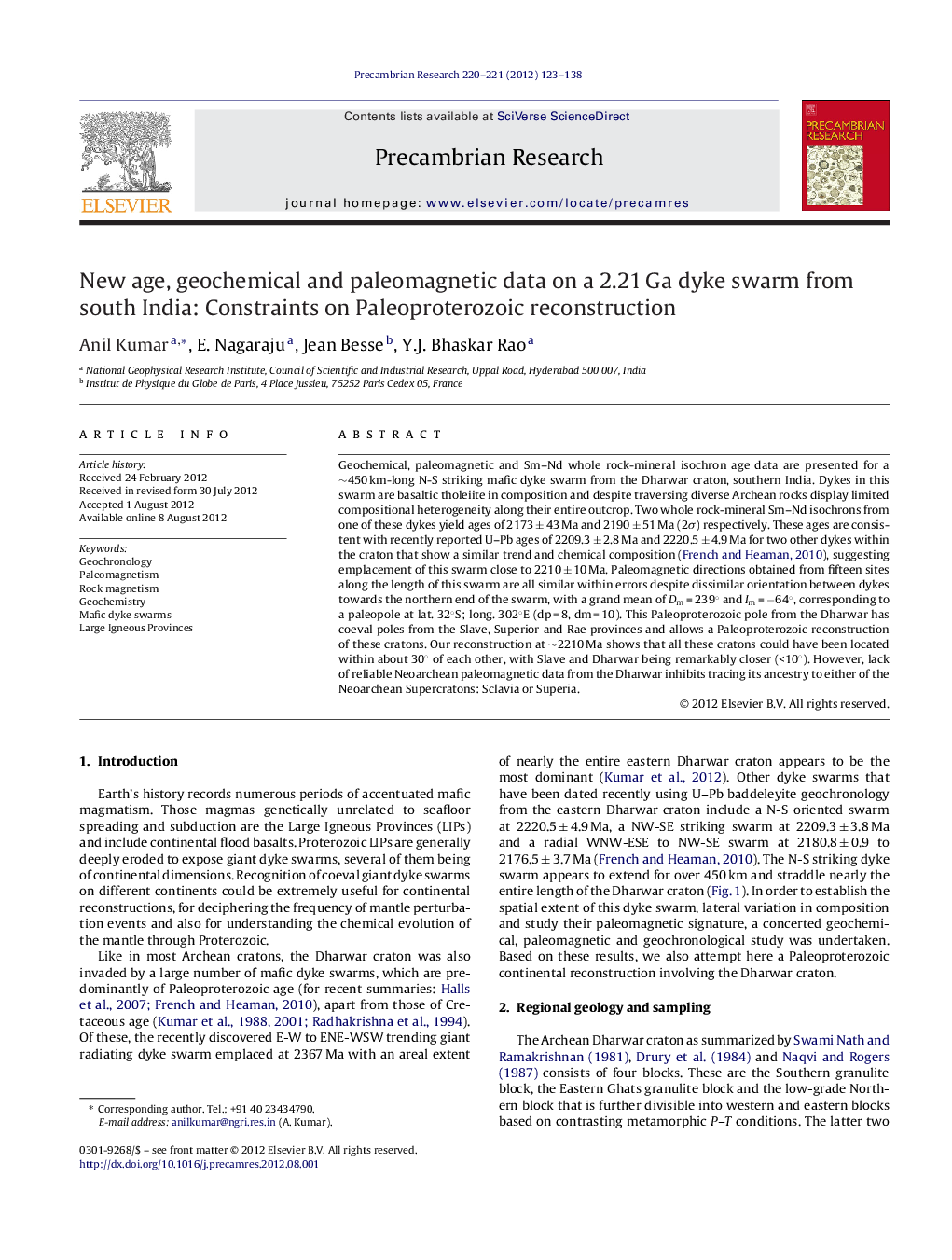| کد مقاله | کد نشریه | سال انتشار | مقاله انگلیسی | نسخه تمام متن |
|---|---|---|---|---|
| 4723477 | 1639652 | 2012 | 16 صفحه PDF | دانلود رایگان |

Geochemical, paleomagnetic and Sm–Nd whole rock-mineral isochron age data are presented for a ∼450 km-long N-S striking mafic dyke swarm from the Dharwar craton, southern India. Dykes in this swarm are basaltic tholeiite in composition and despite traversing diverse Archean rocks display limited compositional heterogeneity along their entire outcrop. Two whole rock-mineral Sm–Nd isochrons from one of these dykes yield ages of 2173 ± 43 Ma and 2190 ± 51 Ma (2σ) respectively. These ages are consistent with recently reported U–Pb ages of 2209.3 ± 2.8 Ma and 2220.5 ± 4.9 Ma for two other dykes within the craton that show a similar trend and chemical composition (French and Heaman, 2010), suggesting emplacement of this swarm close to 2210 ± 10 Ma. Paleomagnetic directions obtained from fifteen sites along the length of this swarm are all similar within errors despite dissimilar orientation between dykes towards the northern end of the swarm, with a grand mean of Dm = 239° and Im = −64°, corresponding to a paleopole at lat. 32°S; long. 302°E (dp = 8, dm = 10). This Paleoproterozoic pole from the Dharwar has coeval poles from the Slave, Superior and Rae provinces and allows a Paleoproterozoic reconstruction of these cratons. Our reconstruction at ∼2210 Ma shows that all these cratons could have been located within about 30° of each other, with Slave and Dharwar being remarkably closer (<10°). However, lack of reliable Neoarchean paleomagnetic data from the Dharwar inhibits tracing its ancestry to either of the Neoarchean Supercratons: Sclavia or Superia.
► We report remarkable chemical homogeneity along a 350 km long dyke.
► The homogeneity is attributed to rapid lateral emplacement from a homogeneous source.
► Paleoreconstruction at 2.21 Ga shows Dharwar, Slave, Superior and Rae were juxtaposed.
► This reconstruction shows dissimilar Archean structural trends among these cratons.
► Available paleomagnetic data is insufficient to trace Dharwar's Archean ancestry.
Journal: Precambrian Research - Volumes 220–221, November 2012, Pages 123–138